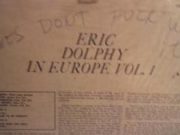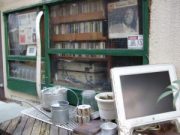
For more than half a century, Nihon Onkyo Engineering has designed interior construction for acoustic rooms, recording and broadcast studios, performance halls and public spaces. In October, I was invited by NOE to attend a demonstration at their engineering studio in Chiba, where they would be introducing their Acoustic Grove System (AGS), a sound filtering system now used by various recording studios.
A small group including journalists, DJs, an astronomer(!) and myself were picked up near Tokyo Station and driven about an hour or so out to the lab. There was a short presentation about the history of the AGS, and then we were led into the sound room for some extended demonstration time.
The AGS was designed to “greatly improve indoor sound fields”. The genesis of the project stems from the lead engineer’s experience with sound acoustics while walking in the forest. As they explain on their website:
At Nihon Onkyo Engineering, our interest in the mysterious sound environment of forests has led us to research focusing on the special behavior of sound waves diffused using mechanisms similar to the trees of a forest. We also believe that everyone feels a certain magical comfortableness when in a forest. Our development of the Acoustic Grove System was a result of our exploration of the connection between the acoustic mechanisms of the forest and this comfortableness.
In conventional acoustic designs for narrow rooms that do not have a particularly large space (such as with concert halls), the combination of reflective surfaces and sound-absorbing surfaces result in unnatural and peculiar characteristics in sound reflections. Moreover, when a loud sound is emitted in a small room, the acoustic energy becomes saturated, resulting in a sound field with poor distortion. To avoid such acoustic disturbances, we devised the AGS as a mechanism to achieve an ideal acoustic space similar to that of a forest.
The presentation explained a bit on the history of NOE and their work with various acoustic systems, then went into the background of the AGS. The AGS system is the result of ten years research, with each individual wooden post requiring precise measuring and placement. What seems to be haphazard and random is the result of a painstaking process to created the perfect sound environment.
The ‘feel’ of the AGS sound lab hits you instantly upon entering; it’s a little hard to describe exactly how but there was something warm and comforting about the space. I’m a non-audiophile music geek and lack the vocabulary for this, so I’ll start with: walking into the sound testing room was like getting into a hot-springs bath. We took seats in a semi-circle facing the wall of the AGS wood and the two speakers set in the middle of the room, then three different pieces of music were played for us; an orchestral piece, a church choir, and The Carpenters. (It wouldn’t be Japan without an appearance by the Carpenters.)
I couldn’t hear anything particularly different with the orchestral piece, but the choir music was immediately striking. It sounded as if the choir was surrounding you, with voices coming at you from all directions. Remarkable! Then The Carpenters…I’ll avoid going into my view on them and why they are deities in Japan, and will just say that Karen’s voice was lovely, and the production on a song like ‘We’ve Only Just Begun’ is revealed in a whole new way via the AGS.
We were then invited to each play a track we had brought with us on CD. A Jakarta-based journalist who was in town doing some music research offered up a track from the album Mad Professor Meets Massive Attack..an inspired choice. The best dub music often sounds like something from another planet; hearing the Mad Professor’s imagination via the AGS was intense, beautiful and somewhat frightening. The track “Radiation Ruling The Nation” builds slowly and methodically, until you feel as you’re inside it; hearing it on the ASG I feel I know what the inside of a computer would sound like if you could shrink yourself and wander around in one.
For my selection I brought along a copy of McCoy Tyner’s album ‘Time For Tyner’, featuring Bobby Hutcherson on vibraphones and marimba. I was eager to hear the tone of those two instruments in particular on the tune ‘African Village’..and they were astounding, far beyond what I had even imagined. Again the sound was washing over us. It was an audio shower. I’ve never experienced anything like it. And the drums were incredible, the high-hat and bass drum came at you from different directions, making it seem like there were two drummers in the room. Fantastic, propulsive tune on the most common headphones but with the AGS it was truly alive.
The AGS system is primarily a professional product used in studios, etc, though you can buy the smaller individual wooden units for at about ¥200,000 per piece, not cheap but said to be perfect for a smaller room in your home. I can totally understand now why audiophiles obsess they way they do as it it’s just a completely different experience to hear music in this way.
Many thanks to NOE for inviting me to the sound lab for this demonstration, I’m ready to spend my next spare ¥200,000 on a home unit. Special thanks to Flora Mitsushima at Kyodo PR for her assistance, as well to translator and sake master Christopher Hughes for providing the fine sake we sampled while listening to the AGS.













